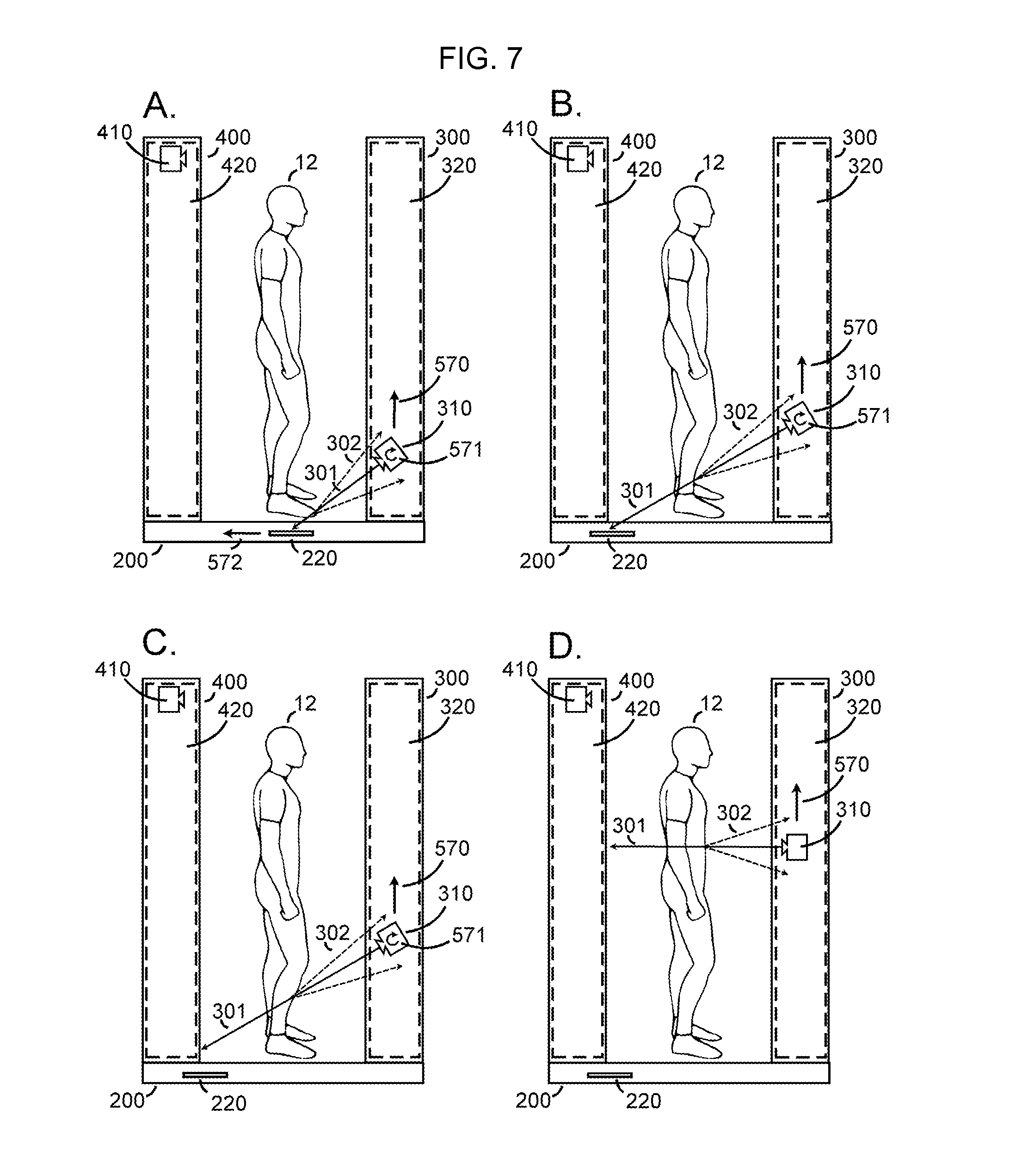Safety

Our
concerns for safety stem from both human nature and from well-publicized disasters.
︎︎︎ Related entries:
Security Theater
Borders
Detection Algorithm
Full Body Scanner
Passport
︎ Random Entry
Tags: systems design, security,
sorting, surveillance
Security Theater
Borders
Detection Algorithm
Full Body Scanner
Passport
︎ Random Entry
Tags: systems design, security,
sorting, surveillance
Following well-publicized major air travel disasters and terrorist acts of the 1980s, all stakeholders in the air travel system—airlines, passengers, government regulators and policy makers, airport space and infrastructure architects, etc—have prioritized safety and security beyond almost any other concerns.
In the airport, one way this became visible was in the spatial changes to the architecture of the airport security check and terminals. Following the terrorist attacks of the 1980s, “intensified security measures changed the planning of airports, deliberating cutting up the open flow of spaces” [1, 2].
Therefore, a main consequence of the increased screening after terrorist attacks is that the airport became spatially segmented as “pre-security” and “post-security” areas. Centralized security “choke points” were relocated to a dedicated area far away from the boarding gate. This provided a buffer in the form of distance, making it difficult for would-be hijackers to get near a plane, but also allowing space and time for those who successfully pass the security checkpoint to be identified prior to the gate [3].
In the airport, one way this became visible was in the spatial changes to the architecture of the airport security check and terminals. Following the terrorist attacks of the 1980s, “intensified security measures changed the planning of airports, deliberating cutting up the open flow of spaces” [1, 2].
Whereas in the past passengers were simply customers, today they are also expected to act as civilian officers who extend the work of security workers beyond the checkpoint 4 .
Therefore, a main consequence of the increased screening after terrorist attacks is that the airport became spatially segmented as “pre-security” and “post-security” areas. Centralized security “choke points” were relocated to a dedicated area far away from the boarding gate. This provided a buffer in the form of distance, making it difficult for would-be hijackers to get near a plane, but also allowing space and time for those who successfully pass the security checkpoint to be identified prior to the gate [3].

Figure 1. X-ray scanning meachanism for people.
The increased distance between the security checks and boarding the airplane made it necessary to develop the lounge concept. Passengers were put in a hold situation once they were processed through security, with nothing to do except to wait. A common way for airports to pay for these increased security costs was to increase revenue by expanding retail. Today, the airport experience is inextricably intertwined with the retail experience for most passengers. Commercialization of airports can be understood as a major consequence of these terrorist attacks, including 9/11 [4].
Passengers are also enlisted to contribute to peer surveillance, whether explicitly or implicitly through stoked fears of covert terrorist agents. Signage and posters around airport spaces serve as constant reminders to passengers as well as all airport personnel that they must always remain vigilant and proactive in reporting suspicious items, persons, and behaviors. This is evident in the ubiquitous messaging, “If You See Something, Say Something.” To fly, one must serve in this public safety task; Hall notes, one “must perform voluntary transparency” [5].

In the airplane, safety considerations are a major requirement of all design decisions. Most airplane components take into account the likelihood of its parts coming apart and causing injury to the passenger in the case of an accidental crash. They must also be flame retardant in the event of an accident. Extensive regulations govern the specifications that manufacturers must meet for any airplane component.
Additionally, safety concerns mediate many of the activities that passengers are allowed to partake while on the plane. Seatbelt usage is not only required, but also are actively visually checked by flight attendants. Passengers must remain in their seats upright and their seatbelts fastened during take-off and landing, and are generally encouraged to stay in their seats throughout the flight if possible, excluding occasional lavatory usage. Safety cards, videos, and demonstrations are a ubiquitous part of every passenger’s experience on the plane.
![]()
Additionally, safety concerns mediate many of the activities that passengers are allowed to partake while on the plane. Seatbelt usage is not only required, but also are actively visually checked by flight attendants. Passengers must remain in their seats upright and their seatbelts fastened during take-off and landing, and are generally encouraged to stay in their seats throughout the flight if possible, excluding occasional lavatory usage. Safety cards, videos, and demonstrations are a ubiquitous part of every passenger’s experience on the plane.

- Zukowsky, John, and Koos Bosma. Building for Air Travel: Architecture and Design for Commercial Aviation. Munich: Prestel, 2000.
-
Adey, Peter. 2003. “Secured and Sorted Mobilities: Examples from the Airport.” Surveillance & Society 1 (4).
-
Wallis, Rodney. How Safe Are Our Skies?: Assessing the Airlines Response to Terrorism. Westport: Praeger, 2003.
-
Thomas-Emberson, Steve. Airport Interiors: Design for Business. Chichester, England ; Hoboken, NJ: Wiley-Academy, 2007.
- Hall, Rachel. The Transparent Traveler: the Performance and Culture of Airport Security. Durham, NC: Duke University Press, 2015.